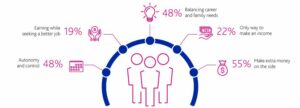
I was thrilled to see the conversations at the recent Digital Asset Week in London shift from the narrative of the last few years, which was a heavy focus on a wide range of Proof of Concepts (POCs), to more of a showcase of programmes in production from
global banks, securities servicing firms and financial market infrastructure providers. There is still a long way to go to reach the predicted market volumes reported in the Fortune Business Insite Report ($12.3 billion DAM by 2030) and the speed of success
still hinges on a number of catalysts needed to aid adoption at scale.
From a timescale perspective, it is apparent that scaling digital asset initiatives will take time, with widespread adoption estimated to be around 3-5 years away. Therefore, in the short term, the market will see further investment in POCs and an increased
number of firms joining sandbox environments, as they collaborate to explore these use cases.
Funding for use cases themselves is under scrutiny and each needs to demonstrate commercial relevance and an ability to bring substantial business value. That value could be: driving access to new and exciting assets classes, or it could bring about market
efficiencies and financial savings. One thing is clear, firms have moved past the conversations about the potential of the technology, or the functionality of the technology available, and the discussions have shifted to how this innovation enhances the financial
market for its current and future investors.
From POC to production
Most of the examples of digital assets being used in production are in the repo and collateral space, with collateral mobility and intraday liquidity being the key business driver, as Basel IV demands firms be more efficient with capital. There are also
examples of tokenised cash being utilised for internal global funding in the securities services and custody space, as well as some interesting examples of trade finance teams using smart contracts to automate Escrow.
In 2024 we can look forward to a number of PVP solutions and carbon tokenisation platforms planned for launch. Tokenisation itself is not the answer. The challenge is to find assets people are interested in investing in. People don’t buy just because something
is tokenised. The benefits need to be clear to the investor; price transparency and self-custody are two potential areas. Clients who are active in the digital space are demanding optimisation between traditional and digital assets, with a single portal and
common reporting across all asset classes, a requirement.
Within the asset management community, there is a great deal of interest in green debt, with significant investment cash being allocated for that market. Whilst T0 settlement is not a necessity, T0 pricing is a powerful tool for the buyside, that can lead
to a reduction in capital buffers.
Scalability
The pockets of standalone innovation we have seen over the last few years have been positive, allowing innovation at speed, but it has created a fragmented marketplace, which is only now starting to see the beginning of consolidation and collaboration.
For the market to see an acceleration in adoption of digital asset activity, we need to see progress in the following areas:
- Regulatory clarity
- Standards
- Liquidity
- Digital currency
As firms look to the next challenge, many are beginning to explore how they can connect into permissioned networks and harmonise fragmentation, so they can provide clients access to a wide range of liquidity. Resource will need to be carefully focused, as
the number of networks, liquidity pools and D-FMI (Digital Financial Market Infrastructure) operatives increase at pace. Firms will not have the budget or appetite to spend the next decade connecting to geographically disparate and fragmented market structure.
So, whilst it is widely accepted that the future will be made up of a series of unified networks, rather than a single universal network, interoperability between them is key if the investor is to benefit from technological innovation.
- SEO Powered Content & PR Distribution. Get Amplified Today.
- PlatoData.Network Vertical Generative Ai. Empower Yourself. Access Here.
- PlatoAiStream. Web3 Intelligence. Knowledge Amplified. Access Here.
- PlatoESG. Carbon, CleanTech, Energy, Environment, Solar, Waste Management. Access Here.
- PlatoHealth. Biotech and Clinical Trials Intelligence. Access Here.
- Source: https://www.finextra.com/blogposting/25341/digital-currency–a-catalyst-for-digital-asset-adoption?utm_medium=rssfinextra&utm_source=finextrablogs
- :has
- :is
- :not
- $UP
- 2024
- 2030
- a
- ability
- About
- acceleration
- accepted
- access
- across
- active
- activity
- Adoption
- Aid
- All
- allocated
- Allowing
- also
- an
- and
- answer
- apparent
- appetite
- ARE
- areas
- around
- AS
- asset
- asset management
- Assets
- At
- automate
- available
- away
- Banks
- Basel
- BE
- because
- been
- Beginning
- being
- benefit
- benefits
- between
- Billion
- bring
- budget
- business
- but
- buy
- by
- CAN
- capital
- carbon
- carefully
- cases
- Cash
- Catalyst
- catalysts
- challenge
- classes
- clear
- clients
- collaborate
- collaboration
- Collateral
- commercial
- Common
- community
- concepts
- Connect
- Connecting
- consolidation
- contracts
- conversations
- could
- created
- Currency
- Current
- Custody
- deal
- Debt
- decade
- demanding
- demands
- demonstrate
- digital
- Digital Asset
- Digital Assets
- digital currency
- digital space
- discussions
- disparate
- Dont
- driver
- driving
- each
- efficiencies
- efficient
- Enhances
- environments
- escrow
- estimated
- examples
- exciting
- explore
- few
- finance
- financial
- Financial Market
- Find
- Finextra
- firms
- Focus
- focused
- following
- For
- Fortune
- Forward
- fragmentation
- fragmented
- from
- functionality
- funding
- further
- future
- geographically
- Global
- Go
- great
- Green
- Have
- heavy
- hinges
- How
- HTTPS
- if
- in
- Increase
- increased
- Infrastructure
- initiatives
- Innovation
- interest
- interested
- interesting
- internal
- Interoperability
- into
- investing
- investment
- investor
- Investors
- IT
- ITS
- itself
- joining
- jpg
- just
- Key
- Last
- launch
- lead
- Liquidity
- liquidity pools
- London
- Long
- Look
- made
- management
- many
- Market
- Market Structure
- marketplace
- mobility
- more
- more efficient
- moved
- NARRATIVE
- necessity
- Need
- needed
- needs
- network
- networks
- New
- next
- now
- number
- of
- on
- ONE
- only
- or
- over
- Pace
- past
- People
- permissioned
- perspective
- planned
- Platforms
- plato
- Plato Data Intelligence
- PlatoData
- PoC
- pockets
- Pools
- Portal
- positive
- potential
- powerful
- predicted
- price
- pricing
- Production
- programmes
- Progress
- proof
- provide
- providers
- range
- rather
- reach
- recent
- reduction
- relevance
- report
- Reported
- Reporting
- requirement
- resource
- sandbox
- Savings
- Scale
- scaling
- scrutiny
- Securities
- see
- seen
- Self Custody
- Series
- Services
- servicing
- settlement
- shift
- shifted
- Short
- showcase
- significant
- single
- smart
- Smart Contracts
- So
- Solutions
- some
- something
- Space
- speed
- spend
- standalone
- Starting
- Still
- structure
- substantial
- success
- Take
- teams
- technological
- Technology
- term
- than
- that
- The
- The Future
- Them
- themselves
- There.
- therefore
- These
- they
- thing
- this
- thrilled
- time
- to
- tokenisation
- tokenised
- tool
- trade
- Trade Finance
- traditional
- Transparency
- two
- under
- unified
- Universal
- use
- used
- using
- value
- volumes
- was
- Way..
- we
- week
- WELL
- which
- Whilst
- WHO
- wide
- Wide range
- widely
- widespread
- will
- with
- years
- zephyrnet












